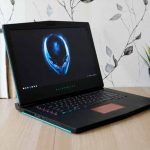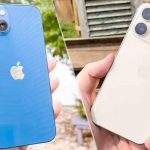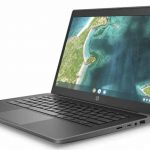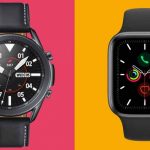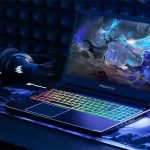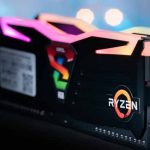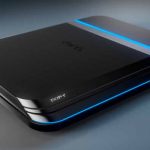Over the last decade, Samsung and Apple have duked it out for smartphone supremacy. During that time, Samsung Galaxy line has thrown repeated haymakers at the iPhone in a desperate attempt to knock Apple MacBook off its digital throne.
Now, Samsung and Apple’s famous rivalry extends to the laptop market. Apple’s extremely popular MacBook Air is up against the South Korean tech giant’s newest release, the Samsung Galaxy Book Pro.
Samsung Galaxy Book Pro vs. MacBook Pro: Which laptop will win?
The Samsung Galaxy Book Pro has emerged as Samsung’s latest entry into the ultra-competitive ultraportable laptop market, and since the 13.3-inch model packs (optional) 4G LTE connectivity into an incredibly svelte frame it’s a strong contender for a spot among our list of the best laptops you can buy.
That means Samsung’s new laptop is competing for your money with the likes of Apple’s MacBook Pro, which packs a powerful combo of power and endurance thanks to the addition of Apple’s chip — read all about it in our MacBook Pro with review.
Samsung Galaxy Book Pro vs. MacBook Pro: Design
The Samsung Galaxy Book Pro and the MacBook Pro are both sleek, light laptops that won’t weigh you down, but Samsung’s new notebook looks to be just a bit lighter and smaller than a similarly-sized MacBook Pro. The 13.3-inch Galaxy Book Pro isn’t as wide or as thick as the similarly sized MacBook Pro, for example, as Samsung has but an emphasis on thin and light with its new laptops.
The MacBook Pro comes in a machined aluminum shell in your choice of Silver or Space Gray, while the Galaxy Book Pro chassis is made of magnesium and aluminum and comes in two colors: Mystic Silver or Mystic Blue.
Ports
The Samsung Galaxy Book Pro has a decent array of ports for such a small laptop, given that the 13-inch model sports a Thunderbolt 4 port, a USB-C port, a USB 3.2 port, a MicroSD card reader and a headphone jack. There’s also a SIM card slot on the 13.3-inch model if you opt for LTE support, which could be useful on the go.
Ports on the Samsung Galaxy Book Pro (Image credit: Future)
If you opt for the 15-inch Galaxy Book Pro, you’ll also get an HDMI port, handy for outputting to external displays for presentations, movie-watching, and more.
By comparison, the 13-inch MacBook Pro currently offers just two Thunderbolt 4 ports and a headphone jack. The current 16-inch MacBook Pro offers a headphone jack and four Thunderbolt ports, but they’re only Thunderbolt 3; we currently expect Apple to release an updated MacBook Pro 16-inch model sometime this year, so if you want the MacBook Pro with the larger screen and Thunderbolt 4/USB 4 support, you’d be wise to wait and see what Apple does this year.
Display
The Retina displays on Apple’s MacBook Pro laptops are bright and colorful, and we’re eager to get Samsung’s Galaxy Book Pro in for testing so we can see how its AMOLED display compares.
For now we can only compare the specs sheets, and just looking at the numbers it seems like the MacBook Pro has an edge over the Galaxy Book Pro in terms of display quality.
Both the 13.3-inch and 15.6-inch models of Galaxy Book Pro have Full HD AMOLED screens with a native 1920 x 1080 resolution. AMOLED displays are typically vibrant and gorgeous, with excellent contrast, thanks to their use of LEDs rather than LCDs.
The Retina displays on both MacBook Pro models still rely on LCD technology, but they’re some of the best LCD screens you can buy on a laptop; the 13.3-inch Retina display on the 13.3-inch MacBook Pro has a native resolution of 2560 x 1600, while the 16-inch MacBook Pro has a native resolution of 3072 x 1920.
In other words, if a high-resolution display is important to you, the MacBook Pro is likely a better choice. But if you’re passionate about AMOLED displays the Galaxy Book Pro might be the better choice — and 1920 x 1080 resolution is plenty for almost anything you’re likely to do on a laptop.
If bezel size is important to you, know that the 13-inch MacBook Pro has some regrettably large bezels, though its 16-inch sibling’s bezels are noticeably smaller around its larger screen. We haven’t had the chance to measure the Galaxy Book Pro’s bezels for ourselves yet, but based on product shots, they don’t appear significantly smaller than those on a similarly-sized MacBook Pro.
Performance
Apple’s new M1 chip has been a game-changer for the performance of every MacBook laptop that gets it, and the 13-inch MacBook Pro is no exception. In our lab testing, the 13-inch MacBook Pro with M1 delivered incredible performance, beating out competing Windows laptops outfitted with 11th Gen Intel i7 CPUs in multiple tests.
That’s important to note because the Samsung Galaxy Book Pro ships with similar 11th Gen Intel i5 and i7 CPUs, suggesting that Apple’s 13-inch MacBook Pro may still hold an edge in terms of raw power.
However, since the Galaxy Book Pro is launching during this awkward period in which the 13-inch MacBook Pro has been upgraded with the M1 chip but the 16-inch hasn’t, the 15.6-inch Galaxy Book Pro may be the clear choice (performance-wise) if you want the larger screen of a 16-inch laptop.
We expect a refresh of the 16-inch MacBook Pro sometime this year, but for now the current model ships with a 9th Gen Intel Core i7 or i9 CPU, which is two full generations behind the 11th Gen Intel i5/i7 CPUs available on the Galaxy Book Pro. If power is important and you must have the larger screen size, the Galaxy Book Pro will give you much better bang for your buck.
Internals
For a professional-level laptop, most will want the best performance possible. Apple’s M1 crushes the Intel 1165G7 in Samsung’s laptop in speed tests. The MacBook Pro also offers greater storage capacity, up to 2-terabytes, double that of the Galaxy Book Pro 360. Apple gives a choice of 8-gigabytes and 16-gigabytes memory, as does Samsung. Of course, the Galaxy Book Pro 360 starts at $1,199, which is $100 less than Apple’s lowest configuration at $1,299.
Samsung offers some features that are not available with the MacBook Pro. A touchscreen allows direct screen input which pairs nicely with its 360-degree hinge, allowing the use of the laptop as a tablet. It would make a very thick and heavy tablet, but it is still nice to have the option available. Samsung’s famous S Pen is also included, making it quick and easy to annotate images or take hand-written notes. Samsung offers Wi-Fi 6E, while Apple only supports Wi-Fi 6, which supports a third band if using a compatible router.
Both claim a very long battery life, up to 21 hours for the Galaxy Book Pro 360 and 20 hours for the MacBook Pro, and each includes a fingerprint scanner for quick login and authentication. However, for a professional-level laptop, the MacBook offers a better processor, brighter and sharper display, and more storage options, making it the best choice for most, if macOS is acceptable. Samsung’s Galaxy Book Pro 360 is a nice, affordable Windows laptop, but probably shouldn’t have been labeled as ‘Pro.’
Battery Life And Other Intangibles
What use is a laptop if you can’t depend on the battery to get you through a busy day? Both Apple and Samsung know this is a huge sticking point for consumers, so it should come as no surprise that both the MacBook Air and Galaxy Book Pro feature batteries designed to last.
Apple promises up to 18 hours of battery life, while Samsung claims their device clocks in at 21 hours. Of course, every person uses their laptop differently, so your mileage may vary. Still, you’re almost certainly going to have no issues with either device losing battery life when you need it the most.
Since both laptops have a range of different hard drive sizes and RAM options to fit your budget, seemingly minor options might tilt some consumers one way or another. The MacBook Air weighs in at 2.8 pounds, while the Galaxy Book Pro checks in at just under 2. Apple’s device features two Thunderbolt 4 ports. In comparison, Samsung’s unit offers one Thunderbolt 4 port as well as one USB-C and one USB-3.2 port, along with a microSD reader —something that is lacking on the MacBook Air.
No matter which laptop you ultimately choose, you will want the peace of mind that comes with an extended warranty. This can be found with Upsie, which offers warranties that allow you to save up to 70 percent on the standard options provided by retailers. You’ll also receive extensive coverage, including protection against accidents like drops and spills. Think carefully about the cost of replacing your laptop as you determine if you should invest in an extended warranty.
TechRadar Verdict. The Samsung Galaxy Book Pro is a powerful and nicely-designed Ultrabook that comes with cutting-edge Intel processors, Wi-Fi 6 and immense battery life. It’s pricey, but you’re getting a fantastic laptop – and it’s a great choice for people with other Samsung devices.
Both Galaxy Book Pro and Galaxy Book are designed for the modern workplace. They come equipped with Windows 10 Pro and are upgradeable to Windows 11 Pro for enhanced security, better collaboration, and best-in-class deployment and manageability.
Depending on your budget, I’d recommend a 2014 or 2015 MacBook Pro or — if you have the budget, a 2020 or 2021 machine with Apple’s renewed M1 chipset. Avoid 2016 to 2018 machines, which have had notorious keyboard reliability problems, and you won’t save that much on a purchase.
But is it worth the price? Well, if you need a true workhorse of a laptop and you want to stay in the Apple ecosystem, I’d say this MacBook Pro is very much worth the price. Frankly, even if you’re not in the Apple ecosystem, this machine is worth the switch if you need a powerful laptop.
Also read:
- What’s so Special about Alienware? what is the Best Gaming Laptop in the World?
- HP has revealed the HP Fortis Chromebooks and Windows laptops, which are designed for remote learning and have a durable construction

